Kawasaki H2R 200-mph Review
Riding the fastest production motorcycle in the world!
Crouched down behind a wing-festooned carbon-fiber fairing about one-third of a mile down an Oregon airstrip, I shifted into fourth gear at wide-open throttle and was both thrilled and alarmed when the front wheel departed the tarmac. I stole a furtive glance at the speedometer and saw three mind-blowing digits unexpected while wheelying: 170.
| Engine | 19.0/20 |
| Suspension/Handling | 12.5/15 |
| Transmission/Clutch | 9.5/10 |
| Brakes | 9.5/10 |
| Instruments/Controls | 5.0/5 |
| Ergonomics/Comfort | 8.0/10 |
| Appearance/Quality | 9.5/10 |
| Desirability | 10.0/10 |
| Value | 6.5/10 |
| Overall Score | 89.5/100 |
Kawasaki’s supercharged H2R accelerates at a rate beyond any production bike in the world, and this was put into sharp focus while attempting to knock down the door to 200 mph. Full throttle will flip the ferocious H2R in the first two gears if you’ve been brave enough to switch off the traction control, and acceleration is so fierce in third gear that a full handful of twistgrip will cause the H2R’s winglets to assume a positive angle of attack as the bike wheelies, threatening to launch into the sky.
Some say age is just a number, implying that it doesn’t mean much. It’s an expression that is most often used by old, tired and used-up people. Well, I now qualify for something approaching old, but I have yet to officially join the 200-mph club in or on anything but an airplane. Similarly, 200 is just a number, but it’s a beautiful and rare number for any motor vehicle of any price, and it became reachable with the H2R.
For instance, consider that a McLaren 650S supercar retailing at more than $265,000 achieved just 160 mph at the end of the Oregon Airstrip Attack’s half-mile course, despite the healthy 641 hp available from its 3.8-liter turbocharged V-8. I’d be looking for a significant 40 mph extra over the same 2,640 foot course in my chase for the mythical double-ton.
Kawasaki’s ultra-exotic H2R shares a few aspects with the McLaren supercar, including carbon-fiber bodywork, aerodynamic appendages, a gearbox that allows full-throttle upshifts, and a pressurized intake system – a gear-driven supercharger in the Kawi as opposed to the exhaust-driven turbo of the car. The H2R also shares a lofty MSRP ($50k in 2015; $53k for 2016), even if it’s just a fraction of the English supercar’s price tag.
The H2R is said to produce 115 lb-ft of torque all the way up at 12,500 rpm, just 1500 rpm below its claimed 310-pony horsepower peak. The conversion from crankshaft power to power generated at the tire on a rear-wheel dyno is typically a loss of about 10%, perhaps stretching to 12%. Taking 12% from 310 hp would translate into about 277 hp, but the H2R I was riding spat out 231 hp when tested on the MotoGP Werks Dynojet dyno we regularly use. Adding 12% to our raw number would take it up to just(!) 259 hp. We’ve seen other H2Rs register numbers in the 240 range.
So, the horsepower number is well into the double triple-digits, but it’s not quite as sick as what Kawi claims, so we wonder if Team Green’s engineers played it a bit safe by spec’ing an overly rich mixture after initially tuning leaner for maximum power. There was a strong smell of gas from the H2R during our dyno runs and the dyno testing performed by other tuners. This keeps intake-charge temperatures lower (remember, the H2/R doesn’t use an intercooler), thereby enabling operation without danger of detonation or internal parts ending up on the outside. Brock Davidson of Brock’s Performance describes the mixture as “incredibly rich,” somewhere near a 10:1 air/fuel ratio. Such a rich mixture comes at the expense of some peak power.
Get the Flash Player to see this player.
The non-R H2, the street-legal one, also runs rich, which holds its peak power down to 199.8 hp at 11,100 rpm on the MotoGP Werks dyno. The conversion from H2 to closed-course-only H2R consists of different ECU mapping to take advantage of the R’s racier camshafts and unmuffled titanium exhaust. It also has a slightly thicker head gasket to nip the compression ratio from 8.7 to 8.5:1. The R gets two extra clutch plates to harness its additional power, along with distinctive carbon fiber bodywork and downforce generating wings in place of the street going H2’s mirrors.
Check out my report on the H2 that has more details about Kawi’s mega halo bike.
Anyway, if you somehow are vacuous enough to think the H2R isn’t freakishly fast, then you don’t understand what an unprovoked 170-mph wheelie means in terms of physics.
Since H2R owners will be plunking down $53,000 for the privilege of riding such an outrageous piece of kit, if you can find one, it’s likely these same owners are also prepared to bring the track-only exotic to special riding areas. A roadracing-type circuit could be monstrous fun, but the 476-lb (fully fueled) machine might feel like a pterodactyl flying in a gymnasium anywhere that isn’t the Nordschleife or the Isle of Man. A dragstrip is another likely venue, but Kawasaki’s longer and much-easier-to-launch ZX-14R is better suited to the sprint through 1320 feet.
For our passionate weekend with the H2R, we headed just south of Portland for the inaugural Oregon Airstrip Attack, hosted by Shift-S3ctor and Revvolution.com. These speed freaks organized their first event in 2011 at a remote airstrip near Trona, California, inviting their friends with fast cars to race down an airport runway, culminating a half-mile later where trap speeds are recorded by lasers.
Racing high-powered vehicles over a half-mile course strikes a nice balance between the too-brief, traditional quarter-mile dragracing and the hold-’er-open-till-she-blows mile racing, and these Airstrip Attack events began to gather momentum among modern hot-rodders. With help from the promotional efforts from Revvolution.com, the Airstrip Attacks expanded out of California to Colorado during the 2015 Pikes Peak Hillclimb races, and then to the quaint town of McMinnville, Oregon, where I planned to punch my double-ton ticket with the H2R.
The weekend event received a ton of support, with a sell-out crowd of 2,000 attendees each day there to see 120 drivers/riders thrashing their vehicles at full throttle. Side-by-side races can start from a “a dig” (stopped) or a roll. Most entrants are cars, of course, from the mild side like Mustang GTs and BMW M3s to the wild end like turbocharged Lamborghinis. To give an idea of how big some of the heavy hitters swing, participants use terms like Alpha 10, which means the cars have been dyno tested to produce more than 1000 horsepower at the wheels! Not impressed yet? There were also a few Alpha 20 cars at the event – yes, more than 2000 hp at the wheels!
The Official 2015 Oregon Airstrip Attack Film!
While the Kawi can’t match those ridiculous power levels, it only has to carry about one-sixth of the weight of the lightest cars, giving it a nearly unbeatable power-to-weight ratio. Hurting the H2R’s acceleration off the line is a relatively stubby 57.1-inch wheelbase that isn’t long enough to keep the front tire on the pavement at full throttle until third or fourth gear. High-powered cars, especially the all-wheel-drive ones like Mitsubishi Evos, Nissan GT-Rs and modern Lambos, are quicker off the line because they, sadly, don’t wheelie.
Some of the car guys, however, prefer rolling starts to standing-start digs because their drivelines can’t handle the abuse. Meanwhile, the H2R gleefully sucked up at least 35 merciless launches without protest in my quest for 200 mph! Here’s what it’s like to roll Kawi’s winged warrior up to a wonderfully empty runway.
The H2R fires to life with a discinctly hard-edged growl through its unmuffled exhaust and settles into an angry idle around 1200 rpm that portends menace. Do yourself a favor and select Kawasaki Launch Control Mode of which there are three. I chose KLCM 1 which sets the maximum revs to 8000 rpm – rawp-p-p-p-p-p-p-p-p! – when the throttle is pinned while waiting to be launched. That leaves a rider to worry about only the clutch engagement point and the quickness of its release.
Unsure exactly how a 300-hp motorcycle would belt out its power, I initially relied on Kawasaki Traction Control (KTRC), which consists of three modes with three levels in each. Kawi claims this latest system “uses complex analysis to help predict and minimize wheel-slip” rather than simply reacting to wheelspin logged by wheel-speed sensors.Translated into layman’s terms, it’s a nice safety net that riders can lean on as they become accustomed to the insanity of this ground-bound missile.
The clutch lever requires a strong squeeze, which would be a detriment on a Rebel 250 but is totally understandable here. The transmission’s neutral position can be difficult to access, further ruling out the H2R from newbies and the MSF course. The view from the mirrors is non existent, much like the mirrors themselves. This bike, if you haven’t already noticed, can’t be judged like a traditional motorcycle. For Kawasaki, the H2R is the equivalent of a moon shot.
Launch control limits power all the way through first and second gears, which makes it relatively easy to pour the coal to the supercharged mill and launch. KLCM switches itself off after shifting to third gear, so the danger of looping the bike becomes real unless you’re luxuriating in the snuggly arms of traction control, which has the added benefit of providing wheelie control in KTRC’s case. Upshifts are made without backing off the throttle or using the clutch thanks to Kawi’s first-ever quickshifter. Stability is enhanced via an an electronic Ohlins steering damper.
Assuming you’ve made it to the top of third gear without flipping over, the tach’s red numbers begin flashing to serve as shift-indicator lights as the revs approach 14,000. Letting it wind out to around 14.4k rpm sees the digital speedo pushing 145 mph before your eager toe toggles a quick transition into fourth gear.
At this stage there’s not a lot of skill required, assuming you’re cool with velocity jumping the chasm from 150 to 170 mph in little more than one second! Then you get to scream through fifth gear from about 170 to 190 mph in just two seconds or so before toeing top gear and seeing how far above 200 mph you can watch the speedometer climb before heaving the time-and-space-bending Ninja across the speed trap.
At these speeds (293 feet per second!), the bike sheds about 40 mph in just a second or two simply by letting off the throttle and sitting up in the hurricane-force breeze. Stellar Brembo M50 brakes with ABS enable amazing rates of deceleration if required.
Unfortunately for my 200-mph goal, the velocity indicated by the H2R’s speedometer was about 5% higher than it was through the unflinching eye of the laser speed trap, which registered a best of 195.82 mph from me at the half-mile finishing line. No worries, I figured, because I still had a second day to join the 200-mph club.
The air surrounding McMinnville was clogged with smoke from local forest fires, and it was disheartening to notice the atmosphere on Sunday morning seemed to be thicker with haze. If air contains smoke, it’ll have less oxygen in it. And less oxygen results in less power.
But we had a secret weapon for Sunday’s event that would surely enable us to hunt down our double-ton prey. Rickey Gadson had stuffed the ECU from his H2/R hybrid racebike in his carry-on luggage, and the Don Guhl reflashing and timing advancement yielded 301 hp on RG’s bike. However, Kawasaki insisted I test its bike in completely stock condition.
Riding Kawasaki’s Supercharged Ninja H2/H2R: Rickey Gadson Interview + Video
But in a wonderful bit of serendipity, we met an H2R owner at the event, and he was happy to offer up his bike as a test mule for Gadson’s special ECU! Our benefactor, Jimmy, owned some 10 other H2s in an attempt to partially corner the market on these one-of-a-kind thoroughbreds!
While Rickey was helping bolt his ECU into Jimmy’s H2R, I went out on the stocker to hone my technique for what is essentially just a twice-as-long dragrace. The most challenging part of the entire run happens in the first two gears.
Using launch control makes getting off the line slightly easier, but I began to feel that it might be holding back my speeds by not unleashing full power in the lower two gears. Since I’ve always been quite adroit with a clutch while launching hard – even getting coached by Gadson himself at three different ZX-14 press events – we decided to go old school and rely on my wrist for total throttle control.
To help control wheelies and allow earlier application of full throttle, we employed an old dragracing tactic of adding rebound damping in the fork and increasing compression damping in the shock. The fork is a unique Kayaba Air-Oil Separate inverted unit with preload, compression and rebound damping all easily adjustable from the fork caps.
On a run back to the start line on Saturday, I had pinned the throttle in 2nd gear and heard the TC cutting in despite no obvious loss of traction. This made me think the TC, even in its lowest setting, was preventing max acceleration, so we decided to run with it turned off.
But no matter how it was ridden, the stock H2R would not break into the 190-mph range on Sunday. The day previous, all my runs but one were at 190 mph or higher. The H2R’s power just didn’t feel as crisp, and the best I could muster on Sunday was 189.4 mph set around noontime. I began to wonder if our bike had somehow lost some of its power.
Those thoughts were dashed when Rickey Gadson, one of the best motorcycle launchers on the planet, struggled to reach 200 mph on Jimmy’s modified bike. RG62 estimated it should have around 280 horses at the wheel, which we expected would easily vault us past the double-ton. We even lowered its front end thanks to straps loaned to us by ZX-14 rider Matt Atkinson, but that didn’t get us into the 200-mph club either. Rickey got it up to 198, and my best run out of three was 196.7
To put this speed in perspective, consider that a ZX-14R, the dragracing champ among normally aspirated motorcycles, was only able to achieve 172 mph when I rode it as a warm-up for the H2R.
2012 Kawasaki ZX-14R Vs. 2012 Suzuki Hayabusa LE – Video
And contemplate this: In the heyday of American muscle cars, icons like a Hemi ‘Cuda could sprint through the quarter-mile in about 13.5 seconds. An H2R can double that distance in about the same amount of time. The Maximum Ninja went from zero to an indicated 200 mph in just 13.9 seconds when hand-timed with the video.
2015 Kawasaki H2R
+ Highs
- Velocity!
- Power!
- Cool factor
– Sighs
- Pricey
- Jagged throttle response
- Wings make lane-splitting difficult
So, I came tantalizingly close to joining the 200-mph club, but was ultimately just a few ticks short. I firmly believe I would’ve punched my double-ton card if not for the forest-fire smoke choking oxygen from the atmosphere. I guess I feel a little like Charlie Brown after Lucy pulled the football away.
Perhaps I need to make plans for Ohio…
2016 Kawasaki Ninja H2R Specifications | |
|---|---|
| Engine | Liquid-cooled, 4-stroke in-line four |
| Displacement | 998cc |
| Bore x Stroke | 76 x 55mm |
| Compression Ratio | 8.5:1 |
| Fuel System | Digital Fuel injection (DFI): 50mm throttle bodies x4 with dual injection |
| Intake System | Kawasaki supercharger |
| Cooling System | Liquid-cooled |
| Lubrication | Forced lubrication, wet sump with oil cooler |
| Ignition | Digital |
| Transmission | 6-speed, dog-ring |
| Final Drive | Chain |
| Frame Type | Trellis, high-tensile steel, with swingarm mounting plate |
| Rake/Trail | 25.1˚ / 4.3″ |
| Fuel Capacity | 4.5 gallons |
| Front Suspension / Wheel Travel | 43mm inverted AOS-II fork with rebound and compression damping, spring preload adjustability and top-out springs / 4.7 |
| Rear Suspension / Wheel Travel | New Uni-Trak with gas-charged shock, piggyback reservoir, dual-range (high/low-speed) compression damping, rebound damping and preload adjustability, and top-out spring / 5.3″ |
| Front Tire Size | 120/70 ZR17 MC (58W) Bridgestone RACING BATTLAX V01 |
| Rear Tire Size | 190/65 ZR17 MC (78W) Bridgestone RACING BATTLAX V01 |
| Front Brakes | Dual radial-mount, opposed 4-piston calipers, dual semi-floating 330mm discs, KIBS ABS |
| Rear Brakes | Opposed 2-piston calipers, single 250mm disc, KIBS ABS |
| Overall Length | 81.5″ |
| Overall Width | 30.3″ |
| Overall Height | 45.7” |
| Overall Height Windscreen Lowered/Raised | N/A |
| Ground Clearance | 5.1″ |
| Seat Height | 32.7″ |
| Curb Weight | 476.3 lb |
| Wheelbase | 57.1 |
| Color Choices | mirror coated black/ carbon fiber |
| MSRP | $53,000 |
| Warranty | N/A |
| Kawasaki Protection Plus (optional) | N/A |
More by Kevin Duke






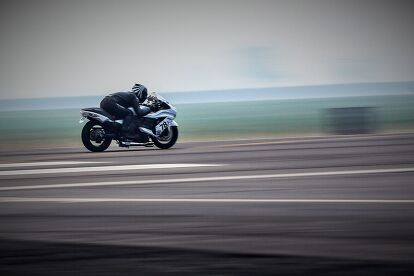











































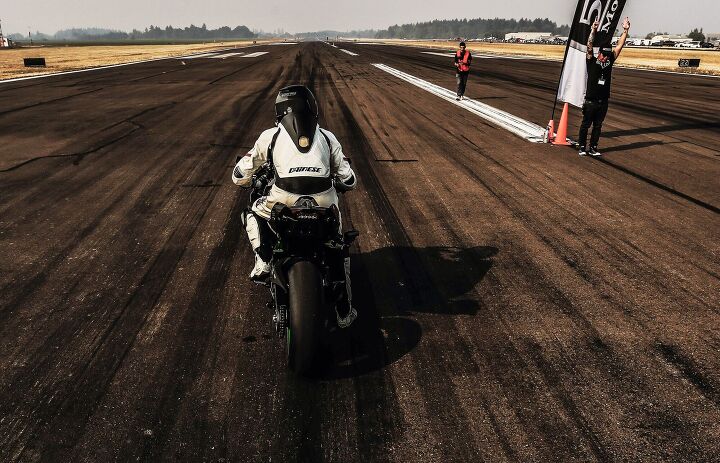













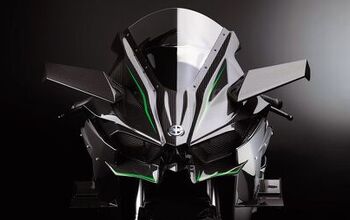
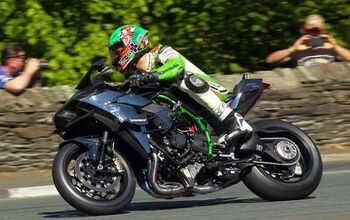
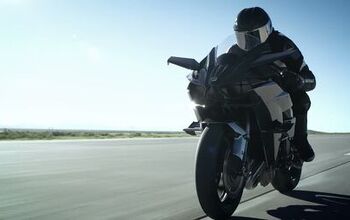

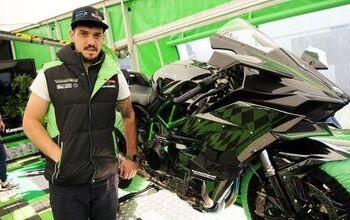

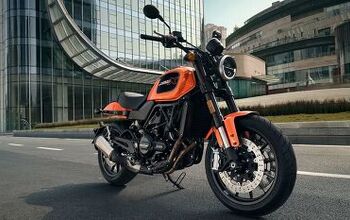










Comments
Join the conversation
One letter and two numbers for you, Mr Duke... E85... and someone to tune the ECU to use it... And OK maybe some bigger injectors if you max out the stockers...
Really cool videos! The way that bike just kept violently accelerating above 150 mph is just mind bending. Makes my 185 mph (indicated) runs on a modded Hayabusa seem serene.
I think I would wear some Depends under my leathers, because that kind of acceleration and speed on a motorcycle might make me pee in my pants - LMAO!!!